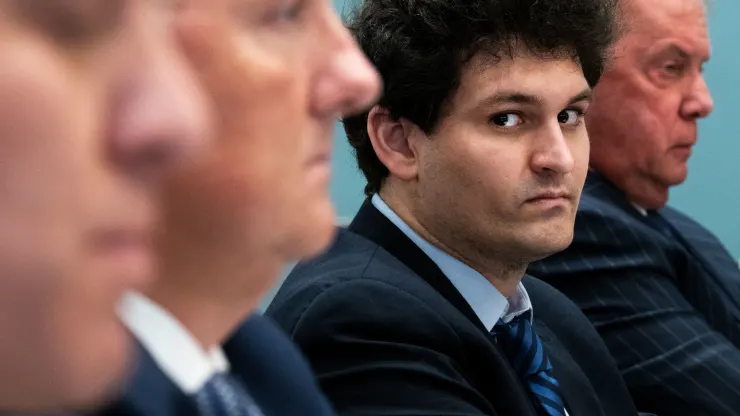The cryptocurrency market has witnessed a year of volatility and new lows. The recent FTX collapse has upended the industry, and confidence in centralized entities is eroding. The ambiguity surrounding cryptocurrency exchanges’ liquidity reserves is at an all-time high. Those still operating need a strategy to regain user confidence and prevent a mass exodus of customers.
The Proof of Reserves (PoR) concept has gained much traction as a potential solution to regain consumer trust. Proof of Reserves is a background check seeking to increase public transparency of centralized cryptocurrency reserves through a verifiable auditing procedure.
Proof of Reserves: Explained
Proof of Reserves (PoR) is the process crypto exchanges use to be publicly transparent about their records and funds for their users. Proof of Reserves is an audit carried out by a third party (such as Armanino) to compare and verify custodian holdings (assets) with user funds (liabilities).
Proof of Reserves allows an exchange to prove that it holds the funds it claims to have on behalf of its clients. This gives users transparency and reassurance that the exchange is financially stable and can return users’ funds in a crisis. Therefore, the goal of Proof of Reserves is to ensure both their users and the public that the exchange is solvent and carries an amount equal to or greater than the sum of the clients’ balance.
Proof of Reserves Versus TradFi Accounting
Periodic financial audits by third parties or auditors are standard among traditional finance (TradFi) institutions. However, while these auditors examine the accuracy of a company’s financial state, most institutions do not disclose information about their financial assets to the public in a comprehensive, verifiable manner.
The Proof of Reserves model involves a third party reviewing the necessary data to confirm that an exchange holds enough digital assets to cover user deposits, much like the well-established TradFi audit approach. On the other hand, the cryptographic, public, and immutable characteristics of blockchain technology make it possible for transparent and privacy-centered methods of conducting an audit.
Proof of Reserves uses novel blockchain technology and a cryptographic accounting method called a Merkle Tree structure (or hash tree) to confirm exchange holdings and the whereabouts of their funds. The Merkle Tree data structure divides complex data into smaller, more manageable pieces for quicker and more efficient processing. Additionally, the Merkle Tree structure offers a secure method of auditing a cryptocurrency business without revealing personal data.
Proof of Solvency: the Real “Proof” We Should Be Addressing?
Although the phrase “Proof of Reserves” seems to be grabbing attention in the cryptocurrency community. Proof of Reserves is only one component of the puzzle that indicates whether a cryptocurrency exchange or company is financially steady.
PoR frequently considers asset reserves, but it excludes exchange liabilities, particularly user deposits. Even though publishing only evidence of assets has advantages, revealing liabilities in conjunction provide a more comprehensive outlook of an exchange’s financial situation.
Solvency indicates an organization’s ability to pay off all of its liabilities with its assets in possession. Most of these reserve assets need to be highly liquid (Bitcoin, Ethereum, and stablecoins such as Tether and USD coin). Only by proving the solvency of an exchange, even if everyone withdraws their funds at once, can customers be convinced they can dispose of their balance at any time.
Since the total amount of assets held in custody must be greater than the total amount of liabilities, it is essential for centralized entities to disclose both their Proof of Assets (PoA) and Proof of Liabilities (PoL) with reliable audits in place.
Therefore, the disclosure of both PoA and PoL takes the shape of a more holistic term for (Proof of Reserves) PoR: A Proof of Solvency or PoS.
A Movement Toward Transparency
2022 has seen a fair share of high-profile centralized exchange insolvencies. These include the likes of Celsius, BlockFi, Voyager, and, most notably, FTX. Each platform’s demise primarily ensued because of its inability to repay user deposits due to “liquidity issues” brought on by the crypto equivalents of bank runs, which prevented thousands of users from withdrawing their funds.
As the FTX bankruptcy and plot unfolds, it becomes clear that massive financial misappropriation to numerous connected entities, including FTX’s sister company Alameda Research. This has caused losses totaling billions of dollars.
Since its collapse, distrust has crippled the community. The imprisonment of Sam Bankmen-Fried, the founder of FTX, unfortunately, cannot stop the ecosystem’s potential for contagion, where more exchanges fail, and their users lose their funds.

Fortunately, this has also unified the crypto community, reinvigorating discussions about a proactive strategy that could lead to sustainable growth. As a result, numerous centalized exchanges have already launched or pledged to launch proof-of-reserve programs for their clients and investors.
Soon after the FTX debacle, Changpeng Zhao (CZ), the founder of Binance, sparked the discussion by announcing that the movement towards transparency through Proof of Reserves would be implemented on his platform.
Exchanges made similar statements in response, including KuCoin, OKX, Crypto.com, Gate.io, Bitfinex, and Huobi.
This is a critical moment for the entire industry. Transparency is more important than ever, and safety and security of users and funds remains the priority. It requires full and collective commitment.
Kris Marszalek, CEO of the crypto exchange with over 50 million users, Crypto.com
The Importance of Proof of Solvency
Ensures Complete Transparency and Accountability
Public transparency through verifiable records would inhibit crypto exchange from undertaking covert financial transactions, such as commingling funds or lending out customer assets, risking insolvency. An exchange that avoids using a PoS model effectively exposes itself to public skepticism.
Builds Trust
Investor sentiment has taken a great hit with the collapse of FTX. Transparent solutions like PoS audits can reassure users through insights that reveal the strength of an exchange’s financial foundation. Furthermore, for an exchange to retain its user base, it is in its best interests to promote trust. This sentiment was echoed by several crypto exchange founders and CEO’s
As a crypto investor myself, the FTX issue was a huge shock for me as well! I’d like to do everything I can to ensure you all that your funds at CoinDCX are safe and you have nothing to worry about.
Sumit Gupta, Co-founder and CEO of one of India’s largest crypto exchanges, CoinDCX
Closing Thoughts on Proof of Reserves
While self-custodial maximalists reiterate the irrelevancy of centralized non-custodial exchanges, establishments such as Binance, Coinbase, and many others are here to stay. They exist for a reason, a gateway for the technophobic, novice investors entering the cryptocurrency world who would prefer a third party holding their digital assets on their behalf.
Entrusting an exchange with assets, however, comes with a significant amount of counterparty risks. Not only is there the risk that the exchange may have weak security measures in place against cyber attacks, but users put their trust in the third party to not deceive them or tamper with their funds.
The rationale for being concerned about centralized exchanges is completely justified. Some centralized exchange founders like Nischal Shetty have even been vocal about the need for decentralization to ensure true transparency.
Centralized entities can’t bring transparency even if they want to. It’s how these entities are structured. Their data is offchain Decentralized entities can be fully transparent without effort. All their data is onchain. Ultimately, transparency will win
Nischal Shetty, Founder and CEO of India’s first automated Crypto P2P trading platform.
However, it is also important to be mindful of the increasing FUD (Fear, Uncertainty, and Doubt) circulating in the space. For instance, Binance has come under more scrutiny, frequently with questionable or inaccurate information.
Turbulence among investors and exchanges has become the new normal in the crypto space. However, the move toward self-regulation via a Proof of Solvency model seeks to address the ecosystem’s lack of trust. Furthermore, it is a movement that amplifies the commitment of centralized exchanges to client fund security. Another step towards curving the bad actors in the space while encouraging broader adoption in the long run.




















